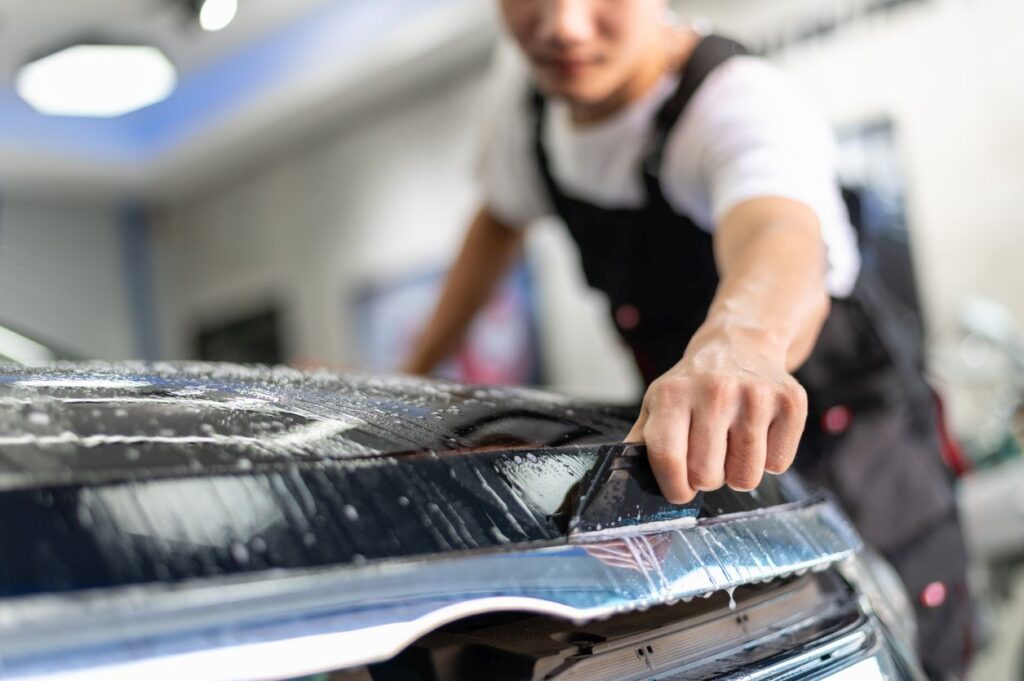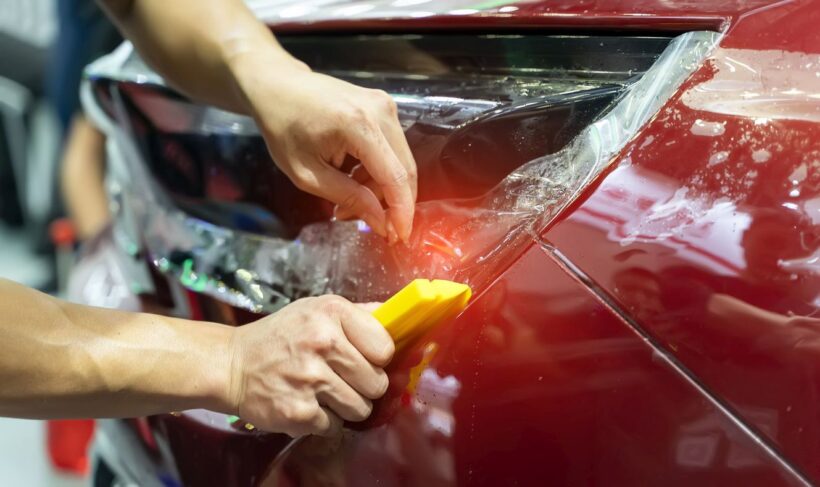A paint protection film is a thin, clear coating that adheres to the exterior of your vehicle. It protects the paint from chips and scratches while reducing fuel consumption by up to 10%. Ceramic coatings are more expensive than paint protection film, but they last longer.
Which should you choose? Read on for guidance on the benefits of Paint Protection Film vs. Ceramic Coating.
UV Protection
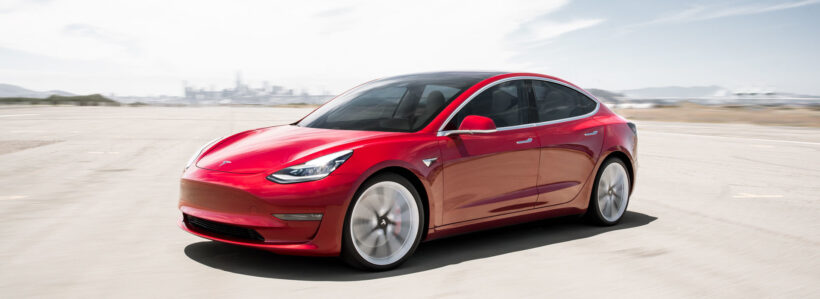
Paint Protection Film (PPF) protects the paint from the harmful effects of sunlight and ultraviolet radiation, whereas ceramic coatings protect only against minor scratches and minor abrasions. Your car’s paint can fade or oxidize if it is subjected to prolonged exposure to sun rays without any form of protection. The film shields your car’s paintwork from premature fading and keeps it looking fresh for years to come. Ceramic coatings provide limited protection from UV rays as compared to Paint Protection Film.
Scratch Resistance
Paint Protection Film provides much better scratch resistance than ceramic coatings because the hardened-resin layer is hard enough to resist most road debris like rocks and other flying stones that are more likely to cause damage to your paint. The clear topcoat and optional Xpel Ultimate clear bra (only available for light colours) create a virtually invisible layer that protects the film from scratching and provides additional impact protection.
Able to Handle Greater Force
Paint Protection Film can absorb much more force than a ceramic coating; therefore, it will better protect your car’s paint in such cases (e.g., when you accidentally hit a road sign or pothole). The lower hardness of most ceramic coatings means they are less likely to stand up well in such accident-avoidance situations.
Reliability and Durability
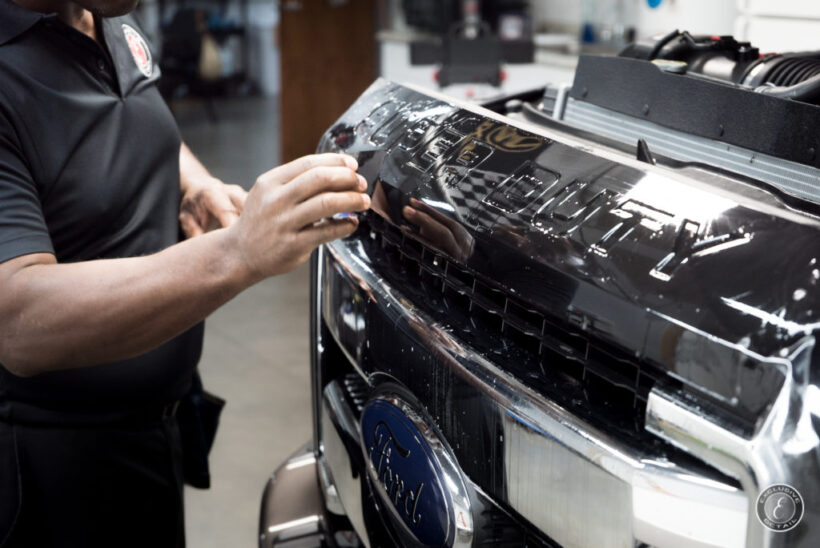
The major advantage of Paint Protection Film over ceramic coatings is its high reliability. PPF has been applied to vehicles for the past 30 years, and its performance over time has been proven. PPF has a large number of satisfied customers (typically, around 95%, according to our research) and is widely considered as one of the best protective solutions against paint damage for cars and motorcycles.
Ceramic coatings, on the other hand, aren’t as proven in terms of reliability. While they deliver superior durability versus traditional waxes and sealants, their track record isn’t as long as that of Paint Protection Film. They are also more expensive than PPFs and can be quite challenging to remove when damaged due to their hardness levels.
Yellowing
Some ceramics tend to yellow over time – mainly noticeable when applied to light or bright-coloured cars. Paint Protection Film does not experience this discoloration since it has no metallic elements like the pigments used in paints. This characteristic can be quite crucial because it allows you to maintain a factory-fresh appearance without requiring any expensive touch-up work in the future.
Acid Rain Protection
Acid rain is a serious environmental issue that affects many areas worldwide and will be one of the biggest threats to car paint if nothing is done against it. Acid rain contains components with pH levels (between 5 and 6) that will cause paint to fade when they come in contact with water on your vehicle. PPF can protect your car’s paint from this type of damage by blocking the acid rain before it reaches your vehicle.
Hard Coating VS Film
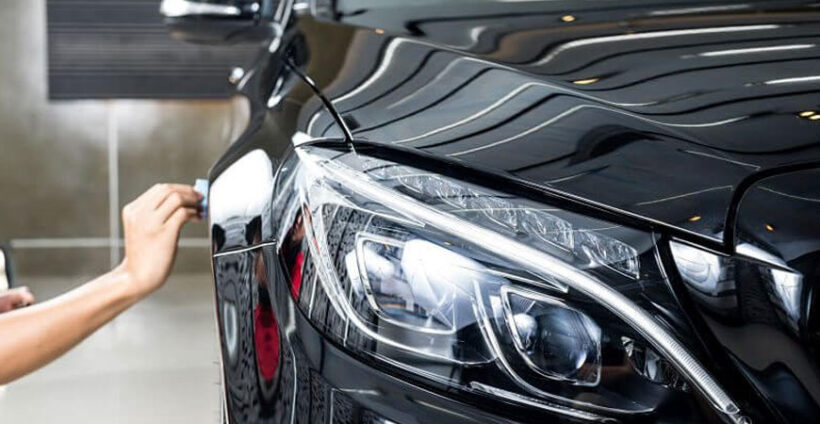
Another essential difference between Paint Protection Film and ceramic coatings is their classification with SEMA (Specialty Equipment Market Association). According to SCPS (SEMA Certification Programs & Standards), PPFs are classified as “hard coatings,” whereas ceramic coatings are defined as “films.” That means that PPFs provide much better protection, durability, and value for money over short and mid-term periods.
Protecting New Cars
If you want the best solution to protect your newly purchased vehicle, Paint Protection Film is, without a doubt, the superior choice over ceramic coatings. When appropriately applied by certified installers, PPFs will provide maximum protection against paint damage from rocks, bugs, flying stones, and other road debris that usually cause scratches on brand new cars – especially if you drive through areas with poor or no roads (e.g., off-road).
If damaged after installation, Paint Protection Film can be repaired by simply removing the affected layer(s) and applying a fresh one. In a damaged ceramic coating, removal is rarely possible because glue residues remain on the paint. For this reason, any scratch or chip can permanently affect your vehicle’s appearance because you cannot restore the affected area without completely removing the coating.
Vertical Surfaces
Another essential difference between Paint Protection Film and ceramics is their respective usage areas. PPFs shouldn’t be installed onto vertical surfaces (e.g., car hoods) due to their inability to properly retain against this type of surface if not perfectly applied. Ceramic coatings can be used horizontally and vertically because they provide maximum grip in all conditions when applied by an expert technician – unlike PPFs, which require additional installation steps to stick correctly.
Resistant against extreme temperatures
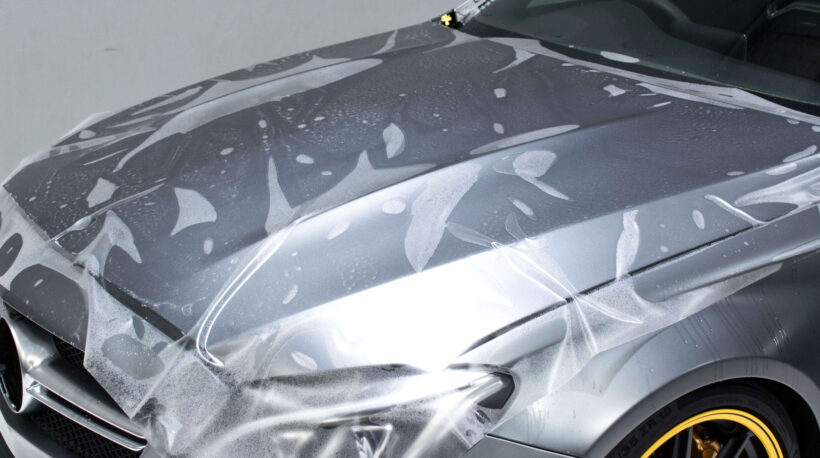
Although both paint coatings and PPFs are resistant to UV rays, extremely high or low ambient temperatures can affect their performance. As mentioned before, PPFs are self-healing materials that regain their usual appearance after being exposed to sunlight for an extended period (e.g., around one month). But this doesn’t apply if they are exposed to extremely cold or hot conditions combined with humidity levels higher than 35%. Ceramic coatings are unaffected by these environmental factors since they have no organic elements. So they are perfect for drivers who need their vehicle to look great all year long, not just in ideal conditions.
Tree Sap and Bird Droppings
Paint Protection Film is made of several layers of protective material, so it can’t be completely damaged even after being exposed to large amounts of the sun for an extended period unless the film’s top layer cracks. However, that doesn’t apply if your vehicle is constantly exposed to tree sap or bird droppings. These substances contain acidic elements that dissolve layers, varnishes, and resins used in PPFs’ composition. When this happens, small particles start peeling off the surface, causing permanent damage that looks just like minor scratches. As mentioned before, this can’t happen to ceramic coatings because they are made of inorganic compounds, which makes them resistant to chemicals.
Summary
The paint protection film is a more economical and cost-effective way to protect your vehicle. You can find it at any local auto parts store like CalgaryPPF, and there are plenty of YouTube videos on how to install the product yourself if you’re feeling brave.

